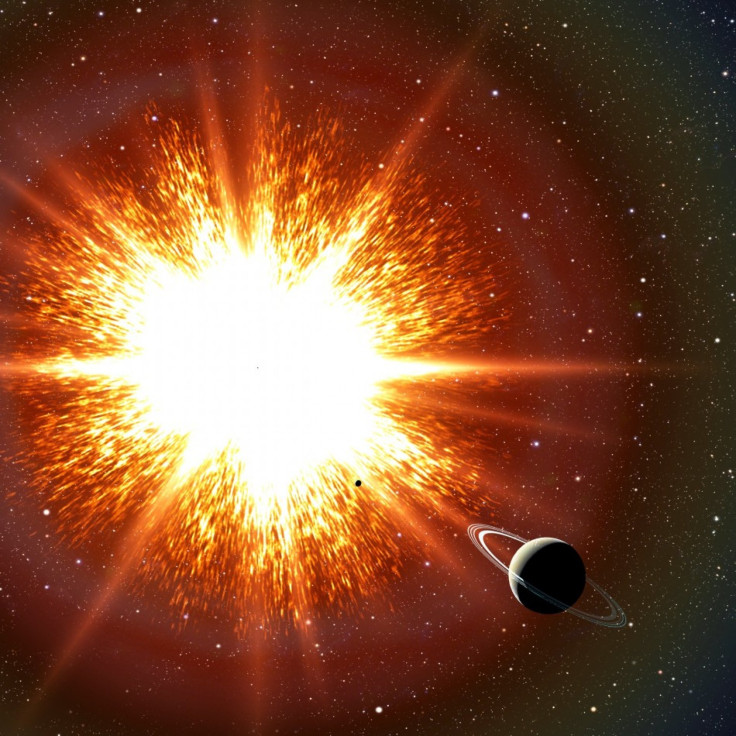Thousands of White Dwarfs Ticking as 'Time Bombs' in Milky Way Galaxy

If you are slow, you would blast. This could be the status of several old stars, or white dwarfs, in our Milky Way galaxy and they may scatter throughout our galaxy as ticking time bombs waiting to explode as Type Ia supernova.
Supernova is nothing but exploding stars, and plays an important role in the evolution of galaxies and planetary systems as they are the source of most of the chemical elements in the universe heavier than iron. They also seed the rest of space with elements such as carbon, oxygen and nitrogen, and can nudge gas clouds into collapsing to form new star systems.
Astronomers have looked for the donor star after the supernova faded from sight, but without success. But, the latest study could answer this puzzle.
A new research showed that some old stars might be held up by their rapid spins, and when they slow down, they explode as Type Ia supernova, which occurs when an old, compact star known as a white dwarf destabilizes.
A white dwarf, which can weigh up to 1.4 times as much as our Sun, is a stellar remnant that has ceased nuclear fusion. The star could blow apart when any heavier gravity overwhelms the forces supporting the white dwarf.
White Dwarfs may explode as a Type Ia supernova through two ways. It can accrete gas from a donor star, or through the merger of two white dwarfs. Most astronomers favor the first scenario as the more likely explanation.
Di Stefano and her colleagues suggest that white dwarf spin might solve this puzzle. A spin-up/spin-down process would introduce a long delay between the time of accretion and the explosion. As a white dwarf gains mass, it also gains angular momentum, which speeds up its spin. If the white dwarf rotates fast enough, its spin can help support it, allowing it to cross the 1.4-solar-mass barrier and become a super-Chandrasekhar-mass star.
Once accretion stops, the white dwarf will gradually slow down. Eventually, the spin isn't enough to counteract gravity, leading to a Type Ia supernova.
We haven't found one of these 'time bomb' stars yet in the Milky Way, but this research suggests that we've been looking for the wrong signs. Our work points to a new way of searching for supernova precursors, said astrophysicist Rosanne Di Stefano of the Harvard-Smithsonian Center for Astrophysics (CfA).
Scientists said that they were not detecting small amounts of hydrogen and helium gas near the supernova explosion as that gas would come from matter that wasn't accreted by the white dwarf, or from the disruption of the companion star in the explosion.
Our work is new because we show that spin-up and spin-down of the white dwarf have important consequences. Astronomers therefore must take angular momentum of accreting white dwarfs seriously, even though it's very difficult science, added Di Stefano.
The spin-down process could produce a time delay of up to a billion years between the end of accretion and the supernova explosion. This would allow the companion star to age and evolve into a second white dwarf, and any surrounding material to dissipate.
In our Galaxy, scientists estimate that there are three Type Ia supernovae every thousand years. If a typical super-mass white dwarf takes millions of years to spin down and explode, then calculations suggest that there should be dozens of pre-explosion systems within a few thousand light-years of Earth.
Those supernova precursors will be difficult to detect. However, upcoming wide-field surveys conducted at facilities like Pan-STARRS and the Large Synoptic Survey Telescope should be able to spot them.
We don't know of any super-Chandrasekhar-mass white dwarfs in the Milky Way yet, but we're looking forward to hunting them out, said co-author Rasmus Voss of Radboud University Nijmegen, The Netherlands.
© Copyright IBTimes 2024. All rights reserved.





















